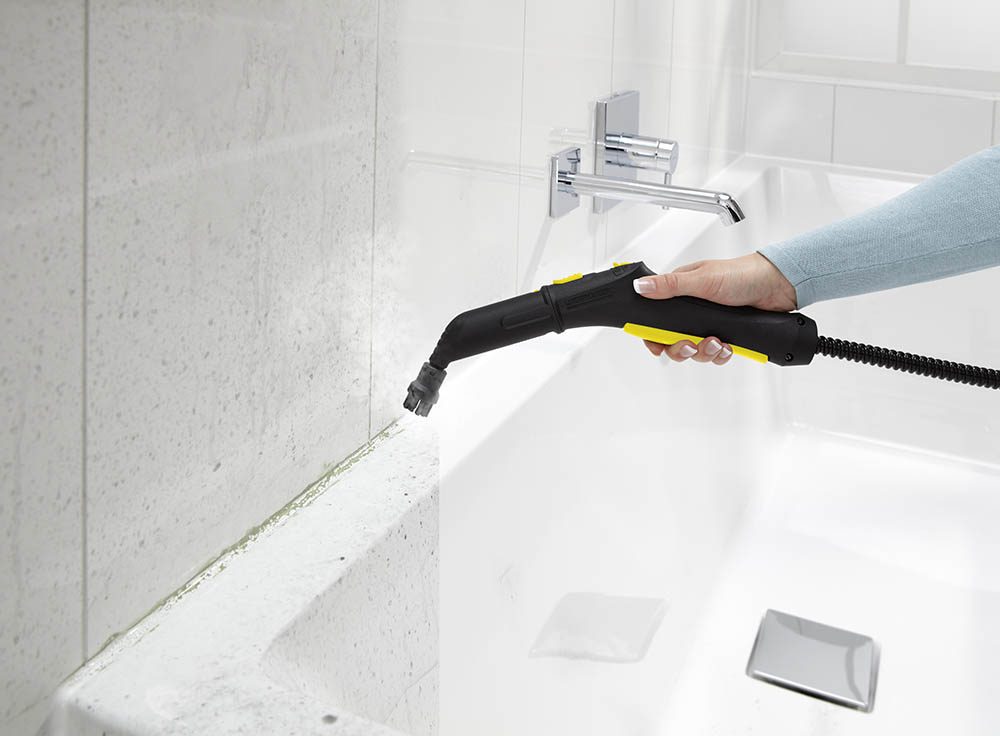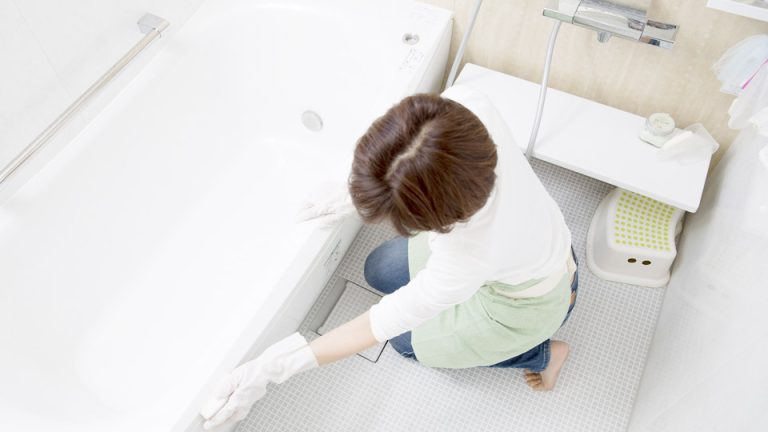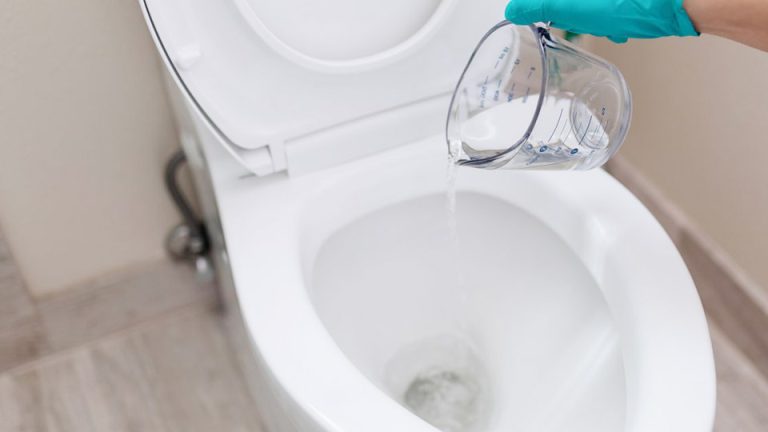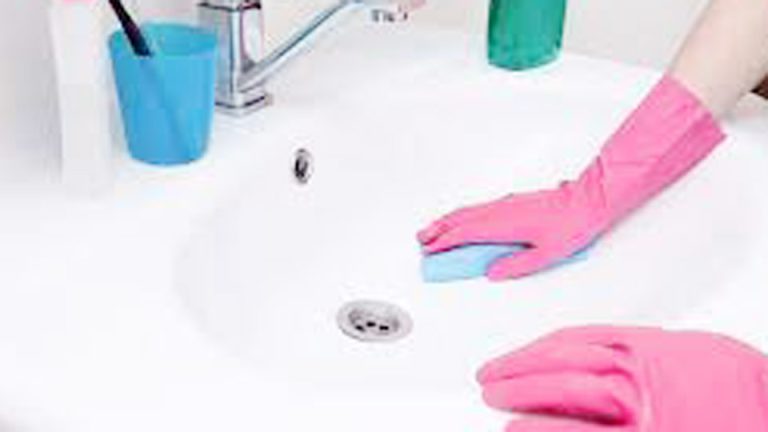If you’ve ever found yourself scrubbing away at stubborn bathroom grime, wondering if there’s an easier way, you’re in the right place. As someone who’s spent years cleaning homes—my own and others’—I’ve tackled every kind of bathroom mess, from soap scum to mildew.
One question I hear all the time is, are steam cleaners good for cleaning bathrooms? Let me tell you, after trying countless tools and techniques, I’ve found steam cleaners to be a game-changer in the bathroom. They’re powerful, eco-friendly, and can make cleaning feel almost effortless.

Image by harveynorman
I’ll share my personal experiences, break down how steam cleaners work, and guide you through using them to get your bathroom sparkling clean.
What Makes Steam Cleaners Special?
When I first heard about steam cleaners, I was skeptical. Could hot steam really tackle the grime in my bathroom better than my trusty scrub brush and cleaner? But after using one for the first time, I was hooked.
Steam cleaners use hot, pressurized steam to loosen dirt, grease, and grime without relying on harsh chemicals. The heat kills bacteria and mold, making them perfect for a germ-heavy space like the bathroom.
I remember the first time I used a steam cleaner on my shower tiles. The grout was dingy, and no amount of scrubbing seemed to help. I ran the steam cleaner over the tiles, and within minutes, the grout looked almost brand-new.
It was like magic—no chemicals, no elbow grease, just steam! That experience convinced me that steam cleaners are worth considering, especially for bathrooms where messes can be tough and surfaces need deep sanitizing.
Why Bathrooms Are a Perfect Fit for Steam Cleaners
Bathrooms are unique cleaning challenges. Between soap scum, hard water stains, and the constant threat of mold, they demand a tool that’s both powerful and versatile. Steam cleaners shine here because they can handle multiple surfaces—tiles, glass, porcelain, and even grout—without damaging them. Plus, they disinfect as they clean, which is a huge win for high-germ areas like toilets and sinks.
Here’s why I think steam cleaners are a great match for bathrooms:
Chemical-Free Cleaning: Bathrooms are small, enclosed spaces, and strong chemical fumes can be overwhelming. Steam cleaners use only water, so you’re not breathing in harsh odors or worrying about residue on surfaces.
Deep Cleaning Power: The high heat of steam (often over 200°F) penetrates cracks and crevices, loosening grime that traditional cleaners might miss.
Versatility: From shower doors to faucets to tile grout, steam cleaners can tackle almost any bathroom surface with the right attachment.
Germ-Killing Heat: Steam kills bacteria, mold, and mildew, which is crucial for keeping your bathroom hygienic.
One caveat: Steam cleaners aren’t a cure-all. They’re fantastic for many tasks, but they’re not perfect for every surface or mess. I’ll cover that in more detail later, but for now, let’s explore how to use a steam cleaner effectively.
How Steam Cleaners Work in the Bathroom
Before I walk you through my bathroom cleaning routine with a steam cleaner, let’s talk about how these machines work. A steam cleaner heats water to create hot, pressurized steam, which is released through a nozzle or attachment.
The steam loosens dirt and grime, while the heat kills germs. You typically wipe the surface with a cloth afterward to remove the loosened debris.
Most steam cleaners come with attachments like brushes, nozzles, and squeegees, which make them adaptable to different surfaces. For example, I use a small brush attachment for grout and a squeegee for glass shower doors. The key is to choose the right attachment and let the steam do the heavy lifting.
Here’s a quick comparison of common steam cleaner types for bathroom cleaning:
| Type | Best For | Pros | Cons |
|---|---|---|---|
| Handheld Steam Cleaner | Small bathrooms, spot cleaning | Portable, affordable, easy to store | Limited water tank, less powerful |
| Canister Steam Cleaner | Large bathrooms, deep cleaning | Powerful, versatile attachments | Bulkier, more expensive |
| Steam Mop | Bathroom floors, large tiled areas | Great for floors, easy to maneuver | Less effective for vertical surfaces |
I started with a handheld steam cleaner because it was budget-friendly and easy to use in my small bathroom. If you have a bigger space or want to clean floors, a canister model might be worth the investment.
My Step-by-Step Guide to Cleaning a Bathroom with a Steam Cleaner
Ready to give your bathroom a steam-cleaning makeover? Here’s how I tackle my bathroom using a steam cleaner. This routine is based on years of trial and error, and it’s designed to be efficient and thorough.
Step 1: Prep the Space
Before you start steaming, clear the bathroom of clutter. Move towels, toiletries, and bath mats to another room or a basket. I learned this the hard way when I accidentally steamed a pile of towels—oops! A clear space lets you reach every surface without obstacles.
Next, fill your steam cleaner’s water tank with distilled water (tap water can leave mineral deposits). Plug it in, let it heat up (usually 5-10 minutes), and gather a few microfiber cloths for wiping down surfaces.
Step 2: Start with the Shower and Tub
Showers and tubs are prime candidates for steam cleaning because of soap scum and hard water stains. I start here because they’re often the dirtiest. Attach a small brush or nozzle to your steam cleaner and work in small sections.
Hold the nozzle a few inches from the tiles or glass, letting the steam loosen the grime. Wipe with a microfiber cloth to remove debris.
For grout, I use a brush attachment and move slowly along each line. The steam penetrates the porous grout, lifting dirt that’s been there for ages. I once revived a client’s shower grout that looked hopeless—it was so satisfying to see it go from gray to white!
Step 3: Clean the Toilet
Toilets are a germ hotspot, and steam cleaners are great for sanitizing them. Use a narrow nozzle to steam around the base, rim, and hinges where grime collects. The heat kills bacteria, and the steam loosens any buildup.
Wipe with a cloth afterward. For the bowl, I stick to traditional toilet bowl cleaner since steam cleaners aren’t designed for submerged surfaces.
Be careful around the toilet’s plastic parts, like the seat hinges. Too much steam can damage some plastics, so test a small area first.
Step 4: Tackle the Sink and Faucets
Sinks and faucets often have hard water stains or toothpaste splatter. I use a small nozzle to steam around the faucet base and drain, where gunk loves to hide.
The steam melts away stains, and a quick wipe with a cloth leaves everything shiny. For mirrors, I switch to a squeegee attachment to avoid streaks—steam works wonders on glass!
Step 5: Finish with the Floor
If you have a steam mop or a floor attachment, this is the time to use it. Sweep or vacuum first to remove hair and debris, then run the steam mop over tiles or vinyl. I love how the steam cleans and sanitizes floors without leaving a soapy residue. Just be cautious with delicate flooring like hardwood—steam can damage it if not sealed properly.
Step 6: Wipe and Dry
After steaming, go over surfaces with a dry microfiber cloth to remove any remaining moisture or loosened dirt. This step ensures a streak-free finish and prevents water spots, especially on glass and chrome.
Surfaces Steam Cleaners Excel At
Steam cleaners are versatile, but they’re not perfect for everything. Here’s what I’ve found they handle best in the bathroom:
| Surface | Why Steam Works | Tips |
|---|---|---|
| Tiles and Grout | Steam penetrates porous grout, lifting dirt | Use a brush attachment, work slowly |
| Glass Shower Doors | Removes soap scum and water spots | Use a squeegee for streak-free shine |
| Porcelain (Sinks, Toilets) | Sanitizes and removes stains | Avoid prolonged steam on fixtures |
| Chrome Faucets | Dissolves hard water stains | Wipe dry to prevent spots |
| Vinyl or Tile Floors | Cleans and sanitizes without residue | Check flooring’s steam compatibility |
Surfaces to Avoid with Steam Cleaners
While steam cleaners are fantastic, they’re not suitable for every surface. I learned this the hard way when I steamed a client’s unsealed wooden vanity, and it warped slightly. Here’s what to watch out for:
- Unsealed Wood: Steam can cause swelling or warping. Always check if wood surfaces are sealed before steaming.
- Delicate Plastics: Some toilet seats or shower fixtures can melt or discolor under high heat.
- Natural Stone: Marble or limestone can be damaged by steam or high heat. Stick to gentle cleaners for these.
- Painted Surfaces: Steam can peel or bubble paint, especially in older bathrooms.
When in doubt, test a small, hidden area first. I always keep a traditional cleaner on hand for surfaces that can’t handle steam.
Pros and Cons of Steam Cleaners for Bathrooms
To help you decide if a steam cleaner is right for you, here’s a breakdown of what I love (and don’t love) about using them in bathrooms:
| Pros | Cons |
|---|---|
| Chemical-free, eco-friendly cleaning | Initial cost can be high (especially canister models) |
| Kills germs and mold with heat | Not suitable for all surfaces |
| Versatile for multiple surfaces | Requires distilled water for best results |
| Reduces scrubbing and elbow grease | Can be bulky or heavy (canister models) |
| Leaves no residue, great for sensitive skin | Learning curve for first-time users |
For me, the pros far outweigh the cons, especially since I have kids and prefer chemical-free cleaning. But if you’re on a tight budget or have delicate surfaces, you might need to weigh your options.
My Favorite Steam Cleaning Hacks
Over the years, I’ve picked up some tricks to make steam cleaning even more effective. Here are my go-to hacks:
Use Distilled Water: Tap water can leave mineral deposits in your steam cleaner, reducing its lifespan. I always use distilled water—it’s worth the extra step.
Pre-Treat Stubborn Stains: For extra-tough grout or soap scum, apply a little vinegar before steaming. The steam amplifies the vinegar’s cleaning power.
Keep Cloths Handy: Microfiber cloths are your best friend for wiping away loosened grime. I keep a stack nearby to avoid running back and forth.
Steam in Sections: Work in small areas to avoid overwhelming yourself. I tackle one wall of the shower at a time—it keeps the process manageable.
Clean the Cleaner: After each use, empty the water tank and wipe down the steam cleaner to prevent buildup. It’ll last longer and work better.
Preventative Tips to Keep Your Bathroom Clean
Steam cleaners make deep cleaning easier, but staying ahead of messes saves even more time. Here are my favorite preventative tips:
Squeegee After Showers: Use a squeegee on glass doors or tiles to prevent soap scum buildup. I do this daily, and it cuts my cleaning time in half.
Run the Fan: Use your bathroom fan or open a window during and after showers to reduce humidity and prevent mold.
Organize Toiletries: Keep toiletries in a caddy or tray to minimize clutter. This makes surfaces easier to steam clean.
Wipe Sinks Daily: A quick wipe with a microfiber cloth after brushing your teeth prevents toothpaste and water stains.
Use a Drain Cover: A mesh cover catches hair and debris, reducing clogs and keeping your sink cleaner.
You’ve Got the Power to Shine!
So, are steam cleaners good for cleaning bathrooms? Absolutely! They’re a powerful, eco-friendly way to tackle soap scum, grout stains, and germs without harsh chemicals. Whether you’re dealing with a small powder room or a large master bath, a steam cleaner can save you time and effort while delivering a deep, hygienic clean.
I’ve seen firsthand how transformative they can be, turning grimy showers and dingy grout into sparkling surfaces.
Cleaning doesn’t have to be a chore. With a steam cleaner and a few of my tips, you’ll be amazed at how easy it is to keep your bathroom fresh and inviting. Grab that steam cleaner, put on your favorite playlist, and get to work. You’re not just cleaning—you’re creating a space where you and your family can feel relaxed and refreshed.
FAQ
Are steam cleaners good for cleaning bathrooms?
Yes, steam cleaners are excellent for cleaning bathrooms. They use hot steam to loosen soap scum, hard water stains, and grime while killing bacteria and mold. They’re versatile for tiles, grout, glass, and porcelain, and they’re chemical-free, making them eco-friendly and safe for sensitive skin. Just be cautious with delicate surfaces like unsealed wood or natural stone.
Can steam cleaners damage bathroom surfaces?
Steam cleaners can damage certain surfaces, like unsealed wood, delicate plastics, or natural stone like marble. The high heat and moisture can cause warping, melting, or etching. Always check your surfaces and test a small, hidden area first. For delicate areas, use a traditional cleaner instead of steam.
Do I need chemicals with a steam cleaner?
In most cases, no! Steam cleaners use only water, and the heat does the work of loosening grime and killing germs. For extra-tough stains, I sometimes pre-treat with a little vinegar, but you can usually skip chemical cleaners altogether, which is great for a healthier home.
How often should I use a steam cleaner in my bathroom?
For a deep clean, I use my steam cleaner once a month to tackle grout, tiles, and showers. For regular maintenance, weekly touch-ups with a steam cleaner on high-traffic areas like sinks and toilets keep things fresh. Daily habits like squeegeeing the shower or wiping the sink reduce the need for frequent deep cleaning.
What’s the best steam cleaner for a bathroom?
It depends on your needs. A handheld steam cleaner is great for small bathrooms or spot cleaning—it’s affordable and easy to store. For larger bathrooms or frequent use, a canister steam cleaner with multiple attachments is more powerful and versatile. If you’re focusing on floors, a steam mop is ideal. Choose based on your bathroom size and cleaning goals.



